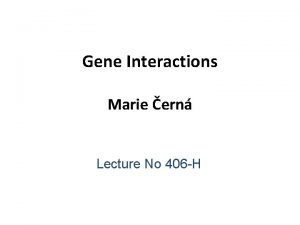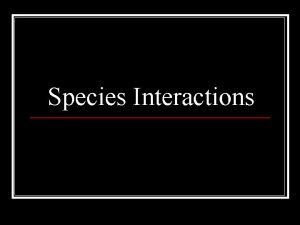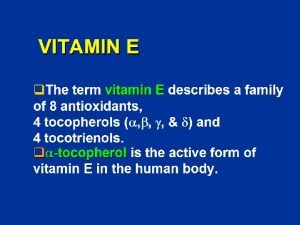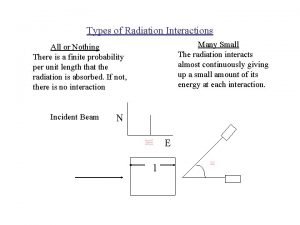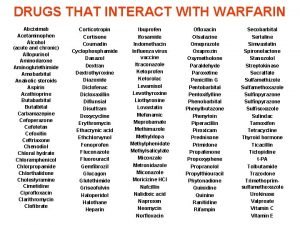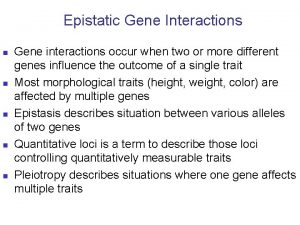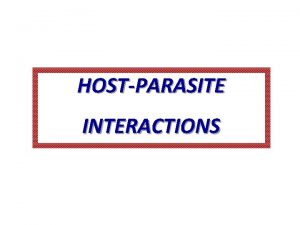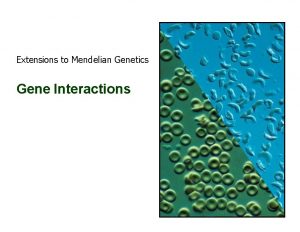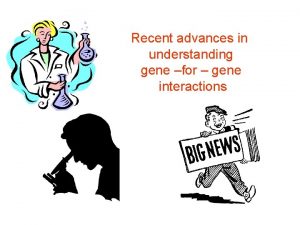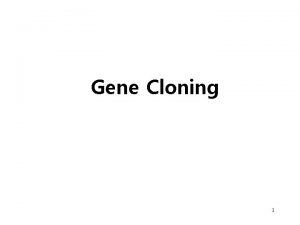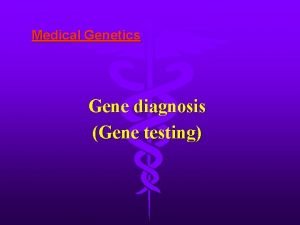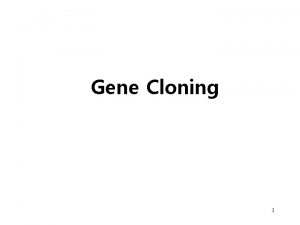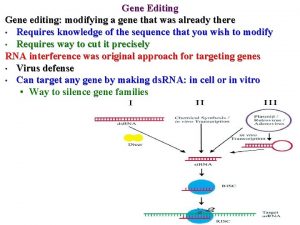GENE INTERACTIONS Dr V P Saini Prof Dean





















- Slides: 21

GENE INTERACTIONS Dr V. P. Saini Prof. & Dean College of Fisheries, Kishanganj

A single character can be governed by two or more genes. They are called non - allelic or intergenic genetic interactions. The independent genes (non-homologous) located on the same or on different chromosomes interact with one another for the expression of a single phenotypic trait of an organism.

1. EPISTASIS Epistasis involves inter-genic suppression or the masking effect which one gene locus has upon the expression of another. Thus, epistasis refers to variation resulting from the interaction of alleles at different loci.

CONTD…. . A gene or locus which suppressed or masked the action of a gene at another locus was termed suppressor or epistatic gene. The gene or locus which was suppressed by an epistatic gene was called hypostatic gene. Body colour in many tropical fish is controlled by epistatic interactions between or among two or more loci.

CONTD…. . • A set of qualitative phenotypes may be controlled by more than two genes. • Body colour in the Siamese fighting fish is an example of a set of phenotypes that is controlled by the epistatic interaction among four genes. • Scale pattern in common carp is the most important phenotype controlled by epistasis

DOMINANT AND RECESSIVE EPISTASIS Dominant Epistasis Dominant epistasis occurs when a dominant allele at one locus (the epistatic locus) produces a particular phenotype, regardless of the genotype at the second locus. The second gene can express its phenotype only when the epistatic locus is homozygous recessive.

Phenotypes controlled by the different types of epistatic interaction of two genes in fish Species Phenotype Type of epistasis Common carp Scale pattern Dominant epistasis 12: 3: 1 Chinook salmon Flesh colour Duplicate recessive gene interaction 9: 7 Gold Fish Albinism Dominant epistasis 12: 3: 1 Mexican cave Eye colour characins Recessive 9: 3: 4 Sumatran tiger barb Duplicate genes with cumulative effects Trunk striping F 2 phenotypic ratio epistasis 9: 6: 1

RECESSIVE EPISTASIS Recessive epistasis occurs when the recessive alleles of one gene locus (aa - the epistasis locus) suppress the phenotypic expression of the alleles of another gene (BB, Bb or bb alleles). This type of epistasis is called recessive epistasis

2. PLEIOTROPISM The phenomenon of multiple effect (multiple phenotypic expression) of a single gene is called pleiotropism. One gene has got its own effect on different parts or different characteristics of one and the same organism.

EXAMPLES FOR PLEIOTROPISM IN FISHES • • • L, D, B and G colour genes in common carp have many pleiotropic effects. For example, Blue (bb) and gold (gg) common carp have lowered growth rate as a pleiotropic effect. The S allele in T. aurea produces saddle back in the heterozygous state (S+). The a allele in channel catfish produces albinism in the homozygous state (aa).

Dominance gene action : Complete dominant gene action occurs when the dominant allele is so strong that it produces its phenotype, regardless of the genotype. Incomplete dominant gene action: A second type of dominance occurs when the dominant allele is incompletely dominant, i. e. , the dominant allele always produces its phenotype, but it is unable to completely suppress the recessive allele in the heterozygous state

CODOMINANT ALLELES The two alleles at a locus are codominant that is, both contribute equally to the phenotypic character of the heterozygote. This inheritance pattern is difficult to distinguish from the partial dominance of a single allele.

ADDITIVE GENE ACTION When the mode of gene action is additive, neither allele is dominant, and each allele always produces its phenotype in a undirectional step-wise manner This means the heterozygous phenotype is intermediate between the two homozygous phenotypes.

LETHAL GENES A gene whose phenotypic effect is sufficiently drastic to kill the bearer is called lethal gene. Death from different lethal genes may occur at any time from fertilization of the egg to advanced age Lethal genes may be dominant, incompletely dominant or recessive.

DOMINANT LETHAL GENES Dominant lethal gene in common carp. Lethal genes N (reduction of scales) and L (lighter pigmentation) kill the carriers in the homozygous state The S gene in Tilapia in another example of a dominant lethal gene.

Genotype Phenotype SS death S+ saddleback (abnormal dorsal fin) ++ normal

RECESSIVE LETHAL GENES In guppy, Poecilia reticulata, when two Y-chromosomes are combined in a male, homozygotes with respect to genes ma (maculatus), ar (Armatus) and pa (Pauper) turn out to be non-viable.

SEX-LINKED LETHAL GENE • The X and Y chromosome of medaka. Oryzias latipes contain one “pigment” locus R with three alleles. • • Normal fishes living in nature contain R gene in the sex chromosomes X and Y. • Genetic analysis has shown that YR YR males obtained in crossing are practically non-viable and the lethal ratio 2: 1 has been reported

MULTIPLE ALLELES A type of inheritance unknown to Mendel is called multiple allelism. An allele represents one of several alternate phases of a gene. Some genes occur in more than two allelic forms (in contrast to alternative forms). In such cases the various allelic forms

COMPLEMENTARY GENES OR DUPLICATE RECESSIVE GENES • If both gene loci have homozygous recessive alleles and both of them produce identical phenotypes, the F 2 ratio 9: 3: 3: 1 would become 9: 7. • Both dominant alleles when present together (AA BB, Aa BB, AA Bb, Aa Bb) and complement to each other and are called complementary genes and produce different phenotype. This 9: 7 ratio is observed in ‘Pearl” Nile tilapia. Two loci A and B are involved. Each locus has two alleles

THANK YOU
 Dean d dean
Dean d dean Gene interactions
Gene interactions Transversion
Transversion Arun saini md
Arun saini md Anu saini sex
Anu saini sex Gene by gene test results
Gene by gene test results Protein power point
Protein power point Opaque materials
Opaque materials Section 20-1 review species interactions
Section 20-1 review species interactions 5 major types of species interactions
5 major types of species interactions Protein binding interactions
Protein binding interactions Chapter 14 interactions in ecosystems
Chapter 14 interactions in ecosystems Qualities behaviors and complexities
Qualities behaviors and complexities Cobalomin
Cobalomin Regional and transregional interactions
Regional and transregional interactions Types of interactions
Types of interactions Nervous interactions with other systems
Nervous interactions with other systems Interactions within ecosystems grade 7
Interactions within ecosystems grade 7 The maximum distance a wave varies from its rest position
The maximum distance a wave varies from its rest position Sertaline
Sertaline Foss chemical interactions
Foss chemical interactions Chapter 22 reaching out cross-cultural interactions
Chapter 22 reaching out cross-cultural interactions

